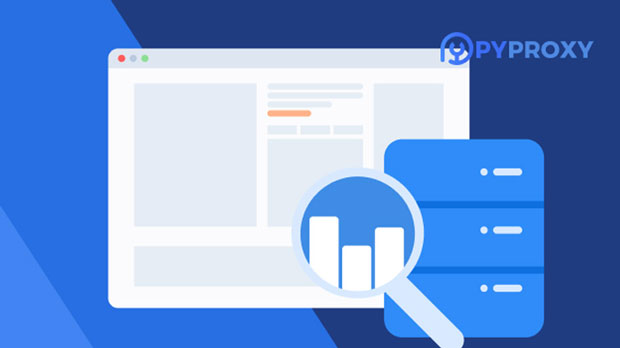socks5 proxy software is a type of network proxy technology that redirects users' network traffic to proxy servers, helping to achieve anonymous internet access, improve internet speed, bypass geographical restrictions, and other purposes. SOCKS5 (Socket Secure 5) is the fifth generation SOCKS protocol, which provides higher security, flexibility, and wider application support compared to previous generations of protocols. SOCKS5 proxy not only supports TCP and UDP protocols, but also can handle various types of network requests, becoming an indispensable part of modern networksIn practical applications, SOCKS5 proxy can effectively hide users' IP addresses, protect personal privacy, optimize internet experience, and improve network access speed, especially when accessing or using restricted content across borders, it can break through geographical blockades. By using SOCKS5 proxy, users can achieve faster connection speeds, higher privacy protection, and more flexible network access methodsI. Basic Concepts and Working Principles of SOCKS5 Proxy SOCKS5 proxy is a network protocol used to forward communication between clients and servers through a proxy server. In brief, SOCKS5 proxy software acts as an intermediary between users and the Internet. All network traffic is transmitted through the proxy server, so that the user's real IP address is hidden, and the proxy for different types of network requests is implemented1. Protocol support: SOCKS5 supports TCP and UDP protocols and can handle almost all types of network requests, including browsing web pages, video streaming, file transfer, etc., unlike other proxy protocols (such as HTTP proxy) that can only support specific applications 2. Encryption and Authentication: SOCKS5 provides some advanced security features, including authentication and encryption. Users can choose to enable encryption to protect the security of data transmission when connecting through a proxy. In addition, the SOCKS5 protocol supports multiple authentication methods (such as username and password) to prevent unauthorized access3. The role of a proxy server: In SOCKS5 proxy, the proxy server is responsible for forwarding requests. When a user sends a request to the proxy server, the proxy server forwards the request to the target server, and the response data is also returned to the user through the proxy server. In this way, proxy servers can not only hide users' IP addresses, but also manage traffic and reduce the risk of network attacksII. How SOCKS5 Proxy Can Improve Internet ExperienceSOCKS5 proxy can improve users' online experience from multiple aspects. Here are its main advantages: 1. Privacy Protection and Anonymous Internet AccessOne of the core advantages of SOCKS5 proxy is its ability to effectively hide the user's real IP address. When a user connects to a proxy server, the external network only sees the IP address of the proxy server, not the user's local IP address. Therefore, users' online behavior will not be directly associated with their personal identity, greatly enhancing privacy protection when surfing the internet-Bypass geographical restrictions: Many websites and services restrict access based on users' IP addresses, such as certain video platforms restricting users in certain regions from viewing content. By using SOCKS5 proxy, users can choose proxy servers located in other countries or regions, disguise their location, and bypass these geographical restrictions-Avoiding IP Blockage: For users who frequently need to access specific websites or services, SOCKS5 proxy can avoid being blocked or restricted by the target website by switching proxy IPs 2. Improve access speed and network stabilitySOCKS5 proxy can improve users' internet speed and stability, especially in unstable network environments, and has significant advantages. Proxy servers can reduce network latency and improve connection quality by optimizing data transmission-Reduce packet loss and latency: Due to SOCKS5's support for TCP and UDP protocols, it can better manage different types of network traffic. When users face packet loss or network fluctuations, the proxy server will reprocess the connection to ensure the stability of data transmission-Breakthrough of network bottleneck: In some areas, users may encounter restrictions on Internet bandwidth or traffic. By using SOCKS5 proxy, users can bypass these restrictions and connect to smoother network lines, improving internet speed 3. More extensive compatibility and application scenariosSOCKS5 proxy has wide application compatibility and supports various devices and operating systems, including Windows, Mac, Linux, Android, iOS and other platforms. Whether accessing web pages through a browser, using instant messaging software, or downloading large files, SOCKS5 proxy can provide stable support-Game Acceleration: For online gamers, SOCKS5 agents can help reduce latency and enhance the gaming experience. By connecting to a proxy server located near the game server, players can reduce lag and latency in the game, and improve game fluency-P2P file sharing: SOCKS5 proxy is also applicable to P2P protocols, such as file sharing networks like BitTorrent. Through proxy servers, users can anonymously share files without exposing their IP addresses, thereby increasing the security of the download and upload process 4. Breaking through network censorship and firewall restrictionsMany regions have implemented strict internet censorship and blocking policies, restricting users from accessing specific websites or applications. SOCKS5 proxy can effectively bypass these restrictions and help users access restricted content-Crossing walls and accessing blocked websites: In some countries or regions, the government may block social media, news websites, and other content. SOCKS5 proxy can help users access these blocked websites by connecting to proxy servers in other countries, avoiding direct exposure to firewall monitoring-Accessing global content: Many streaming platforms offer different content based on users' IP addresses. By using SOCKS5 proxy, users can disguise themselves as users from other countries and access content repositories worldwideIII. Comparison between SOCKS5 and Other Proxy ProtocolsAlthough SOCKS5 proxy has obvious advantages in many aspects, it still has its unique characteristics compared to other proxy protocols such as HTTP proxy, HTTPS proxy, VPN, etc 1. SOCKS5 and HTTP ProxyHTTP proxies typically only support HTTP or HTTPS protocols and are suitable for access requests from web browsers. In contrast, SOCKS5 proxy not only supports web browsing, but also supports various network applications such as P2P protocol, online games, email services, etc. Therefore, SOCKS5 proxy provides a wider range of application support-Scope of application: SOCKS5 is suitable for a wider range of scenarios, while HTTP proxies are limited to web browsing-Performance and Security: SOCKS5 provides higher security and better performance, capable of encrypting transmitted data and supporting authentication, while HTTP proxies typically do not provide encryption and authentication 2. SOCKS5 and VPNVPN (Virtual Private Network) can provide users with comprehensive encryption protection, ensuring the security of data transmission. Compared to SOCKS5 proxy, VPN has stronger privacy protection capabilities because it encrypts the traffic of the entire device, not just the traffic of individual applications. However, VPN services may have a certain impact on network speed as all traffic is encrypted-Privacy Protection: VPNs typically provide stronger privacy protection as they encrypt all traffic, including all network requests at the operating system and application layer. And SOCKS5 proxy only protects the traffic of software or services that pass through the proxy-Speed: In some cases, VPN encryption can affect internet speed. socks5 proxies typically do not encrypt data, therefore they have higher speeds4. How to choose the appropriate SOCKS5 proxy softwareChoosing a suitable SOCKS5 proxy software is the key to ensuring an online experience. When choosing a SOCKS5 proxy, users need to consider the following factors: 1. Geographic location of proxy serverChoosing a service provider with multiple geo location proxy servers can help users achieve faster access speeds and make it easier to bypass geo blocking 2. Security and Encryption FunctionalityEnsure that SOCKS5 proxy supports encryption functionality, especially for the protection of sensitive data. Additionally, choosing proxy software with authentication capabilities can increase usage security 3. Compatibility and ease of useConsider the compatibility between proxy software and one's own device, as well as the ease of operation. High quality SOCKS5 proxy software should support multi platform use and provide a user-friendly interface 4. Price and PerformanceCost effectiveness is also an important factor to consider when choosing SOCKS5 proxy services. High quality service providers often provide stable, fast connections and high bandwidth at relatively high pricesConclusion: The Potential of SOCKS5 Proxy to Enhance Internet ExperienceSOCKS5 proxy software is a network proxy protocol that allows users to access the Internet through intermediary servers, hide the real IP address, and provide higher anonymity and security. It can improve the online experience by bypassing geographical blocks and accessing restricted content such as streaming platforms and social media. In addition, SOCKS5 proxy also optimizes connection speed, avoids network congestion, reduces latency, especially when accessing across regions. Compared to other proxy protocols, SOCKS5 supports more applications and protocols, making it suitable for a wider range of internet needs such as anonymous browsing and data scraping
Jan 09, 2025
![arrow]()




























































